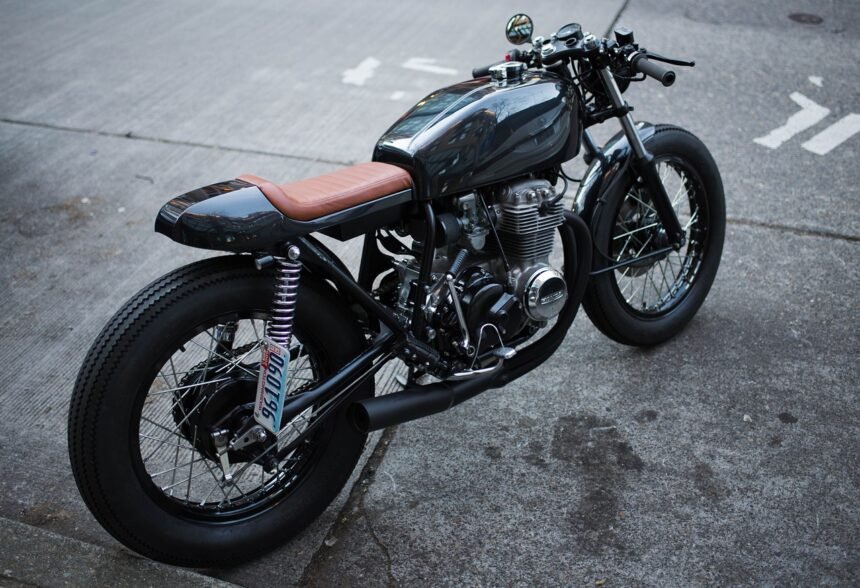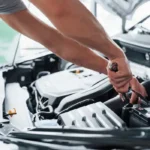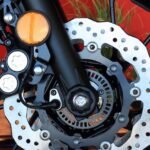Are you making these common motorcycle maintenance mistakes? Whether you’re a seasoned rider or new to the world of motorcycles, maintaining your bike is essential for its longevity and performance. But with so much information out there, it’s easy to overlook some key areas or develop bad habits over time. In this article, we’ll dive into the Top 10 Motorcycle Maintenance Mistakes to Avoid to ensure your ride stays smooth, safe, and reliable.
1. Ignoring Regular Oil Changes
One of the most critical aspects of motorcycle maintenance is changing the oil regularly. Oil lubricates the engine components, reduces friction, and helps prevent overheating. Failing to change the oil on time can lead to severe engine damage.
Why It’s a Mistake:
Old or dirty oil loses its effectiveness, causing the engine to overheat and wear out faster. This can lead to costly repairs or even engine failure.
Solution:
Check your motorcycle’s manual for the recommended oil change intervals. Typically, changing the oil every 3,000 to 5,000 miles is ideal, but it may vary based on your bike model.
2. Using the Wrong Type of Oil
Using the wrong type of oil is a common mistake that many riders make. Not all oils are created equal, and different motorcycles have different requirements.
Why It’s a Mistake:
Motorcycle engines are designed for specific oil viscosities and formulations. Using the wrong oil can result in poor lubrication, reduced performance, and engine damage.
Solution:
Always use the oil type recommended in your owner’s manual, whether it’s synthetic or mineral oil, and ensure it’s suitable for motorcycles.
3. Overlooking Tire Maintenance
Tires are the only contact point between your motorcycle and the road. Neglecting their care can significantly affect safety and performance.
Why It’s a Mistake:
Under-inflated or over-inflated tires lead to poor handling, reduced fuel efficiency, and increased tire wear. Worn tires compromise traction and can be dangerous.
Solution:
Check tire pressure regularly and ensure it’s within the manufacturer’s recommendations. Also, inspect the tread depth and look for signs of wear or damage.
4. Neglecting Chain Maintenance
Motorcycle chains require regular care, including cleaning, lubrication, and tension adjustment. Many riders overlook this, leading to a host of issues.
Why It’s a Mistake:
A poorly maintained chain can snap or wear prematurely, leading to unsafe riding conditions or costly repairs.
Solution:
Clean and lubricate the chain every 500 miles or after riding in wet or dusty conditions. Also, check the chain tension and adjust it as per your manual’s guidelines.
| Chain Maintenance Checklist | Frequency |
|---|---|
| Cleaning the chain | Every 500 miles |
| Lubricating the chain | Every 500 miles |
| Checking chain tension | Every ride |

5. Forgetting to Check Brake Pads
Brakes are vital for safety, yet many riders don’t pay attention to their condition until it’s too late.
Why It’s a Mistake:
Worn brake pads reduce stopping power, which increases the risk of accidents. Ignoring brake wear can also damage rotors, leading to more expensive repairs.
Solution:
Inspect brake pads regularly and replace them if they are less than 3mm thick or if you hear a squealing sound when braking.
6. Not Maintaining the Battery
Motorcycle batteries require maintenance, especially if you don’t ride often. Letting the battery drain or fail to maintain it properly can leave you stranded.
Why It’s a Mistake:
A dead battery can leave you stuck in inconvenient situations. Over time, an undercharged or overcharged battery can also lose capacity.
Solution:
Keep the battery charged, especially during the off-season. Use a trickle charger if you don’t ride regularly and check the battery’s electrolyte levels if applicable.
7. Skipping Air Filter Replacement
Air filters keep dirt and debris from entering the engine. A clogged air filter reduces engine performance and fuel efficiency.
Why It’s a Mistake:
Dirty air filters can lead to poor combustion, increased fuel consumption, and decreased engine power.
Solution:
Replace the air filter according to your bike’s manual—usually every 12,000 to 15,000 miles—or more often if you ride in dusty conditions.
8. Failing to Check Coolant Levels
For liquid-cooled motorcycles, maintaining proper coolant levels is essential for keeping the engine at the right temperature.
Why It’s a Mistake:
Low coolant levels can cause the engine to overheat, leading to potential engine failure or expensive repairs.
Solution:
Regularly check the coolant level and top it off as needed. Replace the coolant as recommended by your bike’s manufacturer, typically every two years.
9. Overlooking Suspension Adjustment
The suspension system affects how your motorcycle handles and rides. Many riders neglect suspension adjustment, impacting comfort and performance.
Why It’s a Mistake:
Improper suspension settings can result in poor handling, reduced stability, and increased tire wear. It also makes the ride less comfortable, especially on long trips.
Solution:
Adjust the suspension settings to match your weight, riding style, and road conditions. Refer to your bike’s manual for guidance on making adjustments.
10. Ignoring Small Repairs
It’s easy to brush off small issues like a loose bolt or a strange noise, but these can quickly turn into bigger problems if left unchecked.
Why It’s a Mistake:
Small issues, when ignored, can lead to larger mechanical failures, costing more time and money to fix later on.
Solution:
Address minor repairs as soon as you notice them. Regular inspections of your bike can help catch problems early.
FAQs
Q: How often should I perform basic motorcycle maintenance?
A: Basic maintenance tasks like checking tire pressure, chain lubrication, and oil levels should be performed weekly or before every long ride. For more extensive maintenance, follow the schedule in your owner’s manual.
Q: Can I use car oil in my motorcycle?
A: No, motorcycles have different lubrication requirements, especially for the clutch and transmission. Always use oil specifically designed for motorcycles.
Q: What is the most important motorcycle maintenance task?
A: Regular oil changes are one of the most crucial tasks, as they keep the engine running smoothly and prevent costly damage.
Q: How can I tell if my brake pads need to be replaced?
A: If your brake pads are less than 3mm thick or you hear a squealing noise when braking, it’s time for a replacement.









